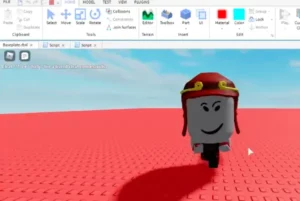What is software and what is a programming language?

Software is a computer program that allows a user to operate a computer. It is a set of instructions and data used to execute specific tasks.
A programming language is a formal language used to develop software programs that will direct or communicate with computers. By means of a series of instructions, a programmer writes a set of commands and algorithms to create programs that control the physical and logical behavior of a machine. In essence, the programmer and the machine communicate, allowing the programmer to specify aspects such as which data must be implemented, how the data should be stored or transmitted, and which actions should be taken by the software depending on varying circumstances.
Most programs are written using high-level programming languages and include languages such as: C, C++, C#, Java, Python, Perl, etc.
Over the years, programming languages have evolved to meet the needs of systems and applications. Modern features of the evolved languages increase the power and flexibility to carry out the complex tasks that innovation and new information and communication technologies (ICT) demand of us.
All machines and devices require a programming language to perform their functions. Knowing the constraints, limitations, and features of a programming language allows a developer to choose a language based on preference or ability and may add to efficiencies, which allow a developer to achieve goals in less time.
Want to learn more? Read on to learn about this interesting (and necessary) topic.
We will touch upon the following questions:
What types of programming languages are there and how are they used?
What programming software is used by programmers directly and indirectly?
What types of programming language are there and how are they used?
Programming languages are the basis for building all digital applications that are used on a day-to-day basis and are divided into two different levels: high-level languages and low-level languages.
High-level programming languages
A high-level language is intended to facilitate the programmer’s work, since a high-level language uses instructions that are easier to understand, read, debug, and maintain. The code of a high-level language resembles normal human language and includes mathematical operators.
In order for the computer to understand a high-level language, the code must be translated into machine language, that a computer understands, by means of translators (compilers, interpreters, and assemblers). A translator will translate a program, written in a high-level programming language, to assembly language, and eventually translate the assembly language into the machine language that the computer understands.

Low-level programming languages
Low-level languages include assembly languages and machine code. These are totally machine-oriented languages and can be hardware and processor-specific. A low-level language serves as an interface and creates an inseparable link between hardware and software as the code exercises direct control over equipment and hardware components.
The programmer must have a solid knowledge of the hardware to implement the assembly code effectively.
Low-level programming languages are subdivided into two types:
Assembly language
Code written at the processor level is known as assembly language and is processor-specific. Assembly language is a bit abstract, less like human language, and very difficult for most people to understand, thus, specialist programmers are usually the only ones to use assembly language directly. Assembly code is fast and efficient but is still a step away from what a computer understands as computers understand machine language, which is represented by 1’s and 0’s. Assembly language must be translated into machine language.
Example: MOV AL, 61h (assigns the hexadecimal value 61 to the “AL” register).
Machine language
Machine language is the most primitive of the languages and is a collection of binary digits or bits (0 and 1) that the computer reads and interprets. The CPU, and thus the computer, can only understand machine language.
Example: 10110000 01100001
Translator
Translates programs, written in a programming language, into the machine language of the computer. The translation process may convert the high-level code to machine language in one session, as is true of compilers, or may convert high-level code line by line and execute each line as it’s converted, as is true of interpreters.
Compiler
A compiler translates an entire program at once and executes the machine language that the compiler produced. The code can be stored for later use without re-translating it (recompiling the code). Examples of programming languages that use compilers: C, C++, Java.
Interpreter
An interpreter translates code, like a compiler; however, the interpreter reads the code and immediately executes the code. Examples of programming languages that use interpreters: Python, Perl, Ruby.

What programming software is used by programmers directly and indirectly?
By programming software, we mean the set of all the tools that allow the programmer to create, write code, debug, maintain and package projects.
Some of the different programs that may be used in completing a project include:
Code or text editors.
A text editor allows a programmer to insert, edit, or delete text. When writing code, text editors may auto-complete code, mark syntactic errors, and be used for refactoring.
Debuggers
They serve to optimize development time by monitoring the execution of a program, tracking the values of certain variables, managing references to objects in memory, and thus help to catch and correct errors.
Linkers
This program takes objects generated in the first steps of the compilation process and the necessary resources from the library, removes those processes and data it does not need, and links the code with the library to increase its size and extension.
Compilers
As mentioned above, these translate the entered code into machine language generating an executable binary code.
Interpreters or translators
Translators (or interpreters) take the source code and translate the code to assembly and machine code so that the program can be executed.
IDE
The IDE (Integrated Development Environment) is a computer application that provides a series of services that facilitate software programming, such as:
Auto-completion functions;
A source code editor;
Database connection management;
Integration with version control systems;
Device simulators;
A debugger to speed up the software development process.
To summarize, without programming languages, commanding computers and other devices would be impossible, because there would be no rules (both semantic and syntactic), no expressions (such as the structure and meaning of all the elements that compose them), and no established way for programmers and machines to “talk”.

To learn more about the importance of programming and how computer programming and technology can play a role in your child’s future, feel free to contact us. We have programs throughout the year that will introduce your child to the world or technology, which includes programming, so that your children can get a head start in developing skills of the future.
Schedule a tour today and be amazed by what the future has to offer.
More To Explore

Why Children Should Learn To Program
Learning to program stimulates creativity, teamwork and problem solving. “studies show: children who study computer

Gen Z and its influence on the metaverse: playing Roblox
A few years ago, you would have been hard pressed to find websites, Early on, Minecraft…
